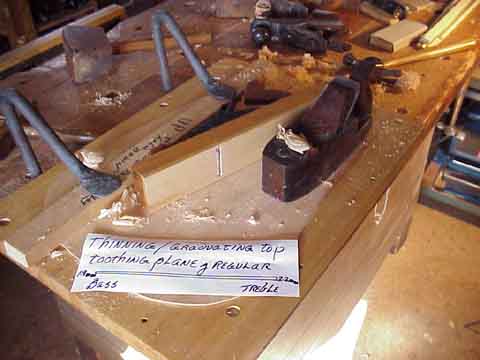Chapter 4
Top held while planeing with hold downs.
Page 13

Diagram shows a method of graduating for sound. The thickness, and sound you wish to achieve will ultimately ,through experience be found only by you. Personal observations , of many classical guitars has given me a thickness range for tops of 2.5 to 1.8 mm. I personally favor thinner at the bass side and thicker at the treble, in hope of booming basses and brilliant full trebles. The thickness or thinness I try to achieve is 1.9mm at the bass side and 2.2mm at the treble in the region of the widest part of the lower bout. Later when the fan braces are installed they to can be graduated to give the desired flex in different regions. The knowledge of springing the top can only come through experience as each piece of wood is different. The ideal classical guitar should be responsive in all areas, easy to play, with the ability to color the sound in all regions and with good volume. It should be responsive the first time it is played. The great composers of the past could not have heard their works played, if the musicians had to wait a hundred years for the instruments to function properly.

